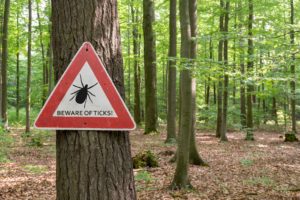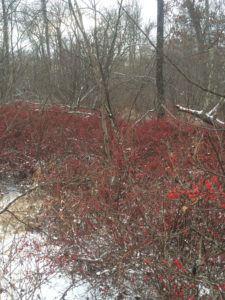Most people are familiar with the impacts of invasive plants to natural areas, but did you know that invasive plants can be hazardous to human health? Did you also know there is a new app available to learn about tick activity near you and help researchers by recording your own tick encounters?
Japanese barberry is an invasive shrub found in many of Wisconsin’s natural areas where it crowds out native understory plants. Researchers have also found that it is linked to a higher incidence of Lyme disease-carrying deer ticks, posing a serious and long-lasting threat to human health.

Thickets of invasive Japanese barberry can harbor high numbers of ticks, including those that carry Lyme disease.
If you are outdoors this fall hunting, setting up timber sales or taking in some vitamin D, a few precautions can help you avoid tick encounters wherever you are. Consider downloading the Tick App from UW-Madison to get info on tick prevention, removal and recent activity in your area. You can also opt to record tick encounters to help researchers better understand how and where people are becoming exposed to ticks. Learn more and download the app. If you are a DNR employee, you can add this app using the DNR app catalogue on your work phone.
For detailed information about ticks and tick-vectored diseases in Wisconsin, check out UW-Madison’s tick webpage.
